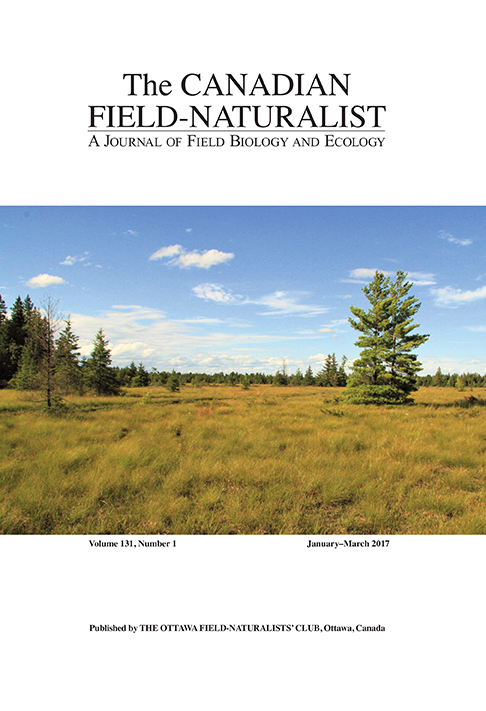A Population-level Analysis of Morning Song: Exploring the Implications for Point Counts
DOI:
https://doi.org/10.22621/cfn.v131i1.1779Keywords:
Acoustic location system, black-capped Chickadee, dawn song, detection rate, point countAbstract
Point counts are widely used for conducting ecological surveys of wild birds. Vocal output of birds varies with time of day, and therefore the results of ecological surveys should also vary with time of day. We modeled how males’ singing rates change over the morning. We calculated song rates in 3 min sampling periods (the standard sampling period used by the North American Breeding Bird Survey) and compared how detection rates vary as sampling period increases. We recorded singing activity in 15 neighbourhoods of breeding Black-capped Chickadees (Poecile atricapillus) with 16-element microphone arrays that recorded every song from every male in every neighbourhood. We calculated the proportion of males that produced one or more songs during 3, 5, and 10 min count periods between nautical twilight and late morning. our results show a strong peak in singing activity just before sunrise followed by a steady decline in singing activity over the course of the morning. We found that longer sampling periods yielded significantly higher detection rates at all times after sunrise. After sunrise, detection rates never exceeded 60%, even with 10 min sampling periods. We found that unpaired males had significantly higher detection rates than paired males but we found no difference between paired males with fertile versus incubating mates. our results provide strong evidence that, for black-capped Chickadees, surveys during the dawn chorus provide the most comprehensive assessment of the number of birds present, and that longer sampling periods yield significantly better estimates of population sizes at all times after sunrise.
Downloads
Published
Issue
Section
License
Copyright for Canadian Field-Naturalist content is held by the Ottawa Field-Naturalists' Club, except for content published by employees of federal government departments, in which case the copyright is held by the Crown. In-copyright content available at the Biodiversity Heritage Library is available for re-use under a Creative Commons Attribution-NonCommercial-ShareAlike 4.0 (CC BY-NC-SA 4.0) licence. For usage of content at the BHL for purposes other than those allowed under this licence, contact us.
To request use of copyright material, please contact our editor, Dr. Dwayne Lepitzki: editor -at- canadianfieldnaturalist -dot- ca





